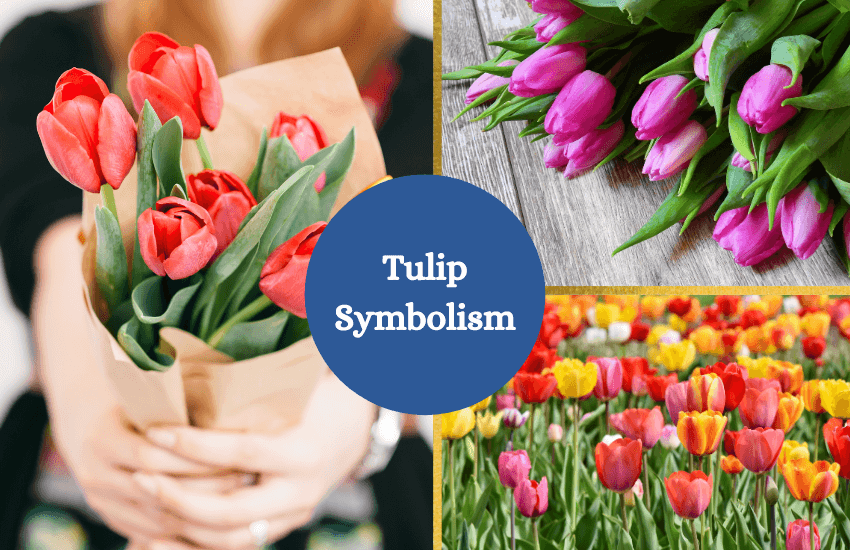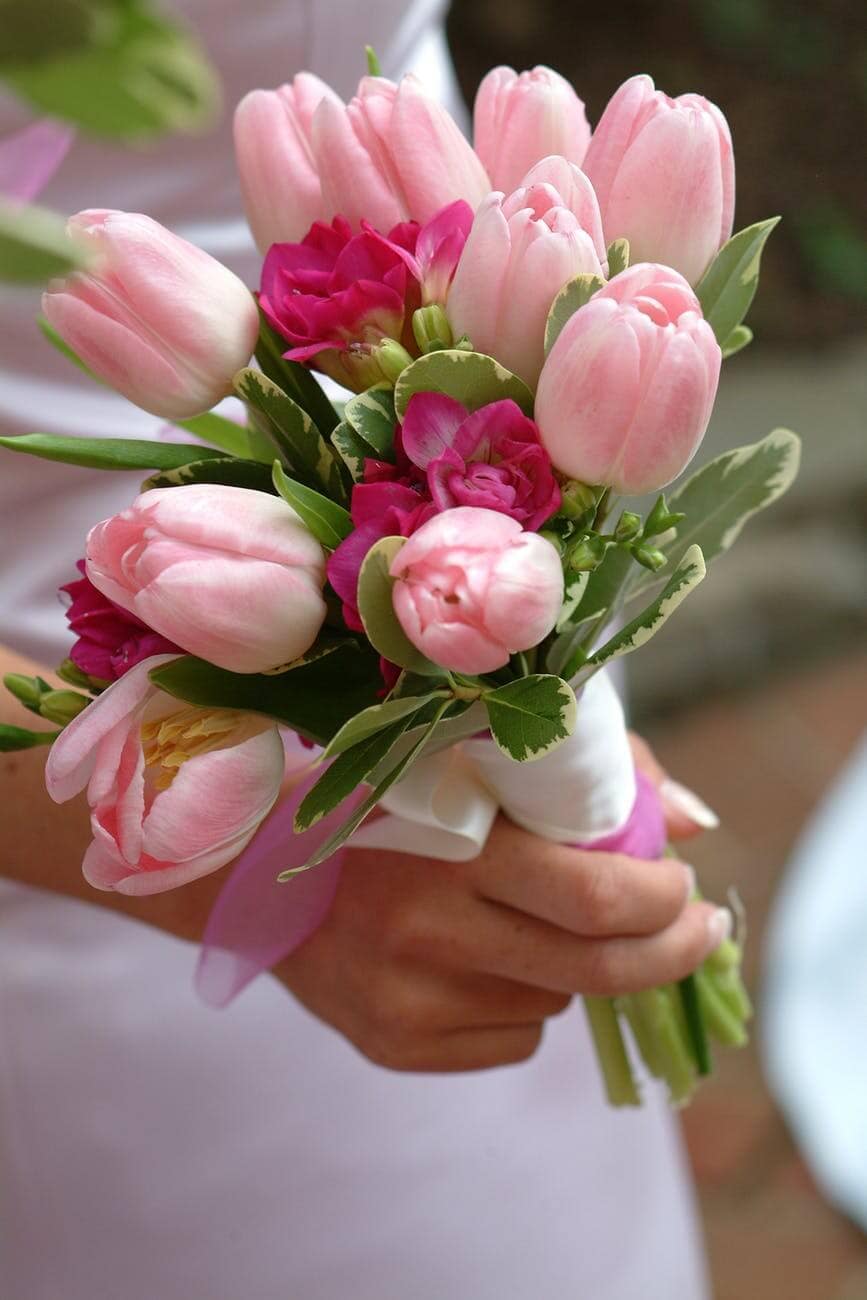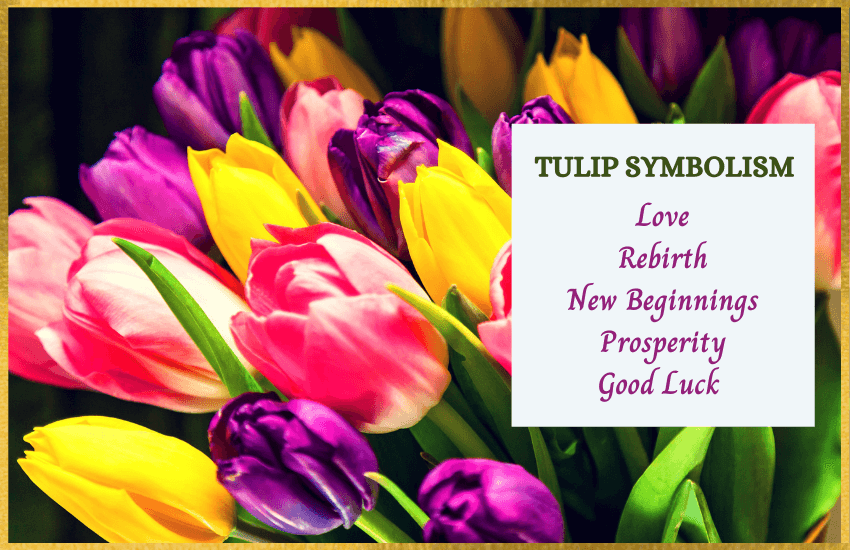
Table of Contents
Known for their vivid, bright colors and beautiful shape, tulips are among the most popular flowers and are garden favorites. Here’s why it was once valued beyond its obvious worth, fueling the so-called tulip mania, along with its significance and uses today.
About the Tulip Flower

Derived from the Turkish term for turbans, tulips are spring-blooming flowers from the Liliaceae family. Most of them are native to eastern Asia and central Europe since they thrive in regions with dry-to-warm summers and cool-to-cold winters. While the flower is closely associated with Holland, it was first cultivated in Turkey, and eventually introduced to Europe after 1550.
There are thousands of different types of tulips. Most of them are cup-shaped with narrow petals, while other varieties feature star-shaped flowers with fringed edges. From bright tones to pastels and bi-colors, tulips can be found in every color you can imagine except blue. Some tulips are solid-colored while others have exotic color streaks.
These streak-like, delicately feathered patterns of tulips were caused by a virus transferred by aphids, which weakens the plant. The Dutch government banned the cultivation of infected tulips, so the ones we see today are the Rembrandt tulips, which were carefully bred to resemble the flower that fueled the tulip mania.
What Was the Tulipomania?

By the 17th century, the flower became a collector’s item and an exotic luxury sold for hundreds of dollars each. The story goes that many Dutch families mortgaged their houses and estates in hopes of investing in tulips and reselling them at higher prices, hence, the tulip mania.
One of the rarest and most valuable tulip in the craze was the Semper Augustus, with flame-like white and red petals. It’s said that there were only 12 bulbs that existed at the time, so buyers thought they had made an investment in a one-of-a-kind plant.
Back then, no one knew what made the flower produce irregular streaks of color—it was just in the 20th century that the virus was identified—so it seemed promising during the Dutch Golden Age. In 1637, the tulip market crashed after just two months, causing prices to drop. Tulipomania is often considered to be the first recorded speculative bubble.
By the 19th century, tulips became more affordable for ordinary gardeners, and commercially valuable in Holland.
Meaning and Symbolism of Tulips

Tulips have captivated us for generations, and their symbolism allows us to say a lot without speaking a word. Here are some of these meanings:
- Declaration of Love – This association likely originated from the legend where young Turkish men gathered tulips to court girls residing in the harems. The flowers are said to be found along the Bosporus, a strait in Turkey, uniting the Sea of Marmara and the Black Sea. The Tulipa gesneriana, also called the Didier’s tulip, is believed to have aphrodisiac powers, which attract love and luck.
- Rebirth or New Beginnings – Tulips come up early in the spring, and can be seen in different colors, shapes, and varieties, adding new life to surroundings after the gloomy winter season.
- Protection, Luck, and Prosperity – The Tulipa vierge is believed to provide protection when worn as a charm. Some even carried the flower in their purse or pocket in hopes that it would give them protection and good luck. Also, planting tulips near your home is thought to counteract bad luck and poverty.
Symbolism of Tulip Colors
Tulips come in just about every color of the rainbow, and here are the specific color meanings of the flower:
- Red tulips can be the best flowers to express your undying love, since the color itself evokes passion and romance. Also, the bloom says, “trust me or believe me.” In some contexts, it may also mean charity or fame.
- Pink tulips are also associated with love, and the flower simply says, “You’re my perfect lover.”
- Purple tulips symbolize eternal love.
- Orange tulips say, “I’m fascinated by you.”
- White tulips represent sincerity or forgiveness, which makes them the best apology flowers.
- Yellow tulips say, “There’s a sunshine in my smile.” In modern interpretation, the cheery hue itself represents friendship. However, the flower can also represent hopeless love or no chance of reconciliation, so be careful when giving them to someone after a big fight.
- Black tulips symbolize sacrificial love.

Uses of Tulips throughout History
These flowers were highly valued long before they became popular in Holland—and have been used as food and medicine for many centuries.
- In Religion and Politics
In 1055, tulips were cultivated in the Tien Shan Mountains, and eventually became a holy symbol, even representing paradise on earth. The Turkish term for tulip has the same letters as Allah when written in Arabic. Also, it’s regarded the flower of the Islamic Republic, often seen as a motif in tiles and ceramics decorating the mosques of Edirne and Istanbul.
- In Gastronomy
During the Dutch famine in 1944 to 1945, the tulip bulbs were utilized as food out of desperation and was even grounded into flour to make bread. Unfortunately, there were reports that they gave people skin rashes and various illnesses. Though it isn’t advisable to eat tulip bulbs, the petals are edible and commonly cooked with beans and peas. Back in the day, the petals were also eaten with syrup as a dessert, but now they’re commonly used as garnish.
- In Medicine
In the 17th century, it’s believed women crushed tulip petals and rubbed them onto their skin to soothe insect bites, rashes, scratches, burns, and cuts. Eventually, the flowers were used to make lotions and skin creams.
Disclaimer
- In Arts and Literature
During the 13th century, tulips were a highlight of Persian art and poetry, especially the Gulistan by Musharrifu’d-din Saadi. Tulips were also often chosen in European paintings, especially those from the Dutch Golden Age.
- As Floral Decorations
During the 16th and 17th century in Europe, the giving of tulips signified offering one’s fortune, and came with special vases. Mary I of Scotland is thought to have started the trend of using tulips as a flower decoration indoors, placed in pagoda-shaped vases.
Tulips in Use Today
These flowers signal the arrival of spring, brightening up the gardens and borders for the new season. There are hundreds of unique and colorful varieties of tulips to choose from, and because they’re a long-lasting cut flower, they are excellent for indoor decorations. In fact, tulips will continue to grow in your vase after you cut them, which is best for adding a pop of color and elegance to any room.
In weddings, they’re often used as floral decorations and centerpieces, but they work best in bouquets. For bridal bouquets, tulips look pristine in all-white posies, but also look majestic when combined with other flowers like carnations, peonies, and daffodils. For bridesmaids’ bouquets, tulips can be bright and colorful, often complementing the wedding theme.
When to Give Tulip Flowers
These beautiful flowers have inspired love and passion, and they can be used for any occasion. Since tulips are a declaration of love, it’s the best flower of choice for your first bouquet to give to someone you admire. They’re regarded as the 11th wedding anniversary flower too.
If you want to brighten up someone’s day, a colorful posy of tulips is a great choice. It can be given to a friend as a thoughtful get-well gift, as well as to celebrate achievements. White tulips are the best pick for an apology bouquet.
In Brief
Once an exotic luxury, tulips are readily available today and remain an exquisite option in bouquets, fields and gardens. With all of their symbolic meanings, it’s not surprising that these flowers are a favorite.








